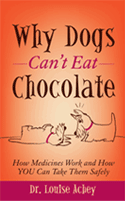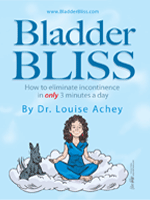Archive for November, 2016
When I was at my hairdresser’s last week, he asked me, “I was at the grocery last week looking for Mucinex® but instead of just a couple of choices, I found a whole section of it, all saying Mucinex® on the box! How do I pick the one that’s best for me?”
The original Mucinex® tablets are still out there, containing only one ingredient: guaifenesin, pronounced gweye-FEN-ah-SIN. Guaifenesin works as an expectorant and has been sold for decades as the main ingredient in Robitussin® cough syrup.
Guaifenesin was developed by the A.H. Robbins company in 1949 and introduced as a prescription cough syrup called Robitussin®. By the time I graduated from pharmacy school 30 years later in 1979, Robitussin® was the most popular prescribed cough medicine in the country, with various formulations like Robitussin PE, Robitussin AC, and Robitussin DM. Whether alone or combined with a decongestant, an antihistamine or a cough suppressant, Robitussin was a best seller both as a prescription and non-prescription cough medicine.
Guaifenesin an expectorant. It works by increasing the fluid in your sinuses, throat, and lungs, to help liquefy sticky phlegm and mucus so that you can cough it up and out. Although they are both called cough medicines, an expectorant works differently than a cough suppressant. Cough suppressants dampen down your cough, helping you get much needed rest at night but don’t deal with stubborn gunky phlegm like an expectorant can.
Eventually guaifenesin moved beyond just Robitussin® syrup and as tablets it was sold as the prescription medicines Entex®, Entex LA®, and Entex® PE, a combination of guaifenesin and pseudoephedrine (Sudafed®). These were very popular in relieving symptoms of throat and lung congestion and sinusitis. When the patent protection on them expired, the company applied to the Food and Drug Administration (FDA) to sell the exact same formulations over-the-counter, and Mucinex® and Mucinex-D® were born.
Adding a decongestant to guaifenesin can help with sinusitis and a stubborn, non-productive cough. Mucinex-D® is the non-prescription equivalent of Entex® PE. It’s available right next to the original Sudafed®, and like Sudafed® you’ll need to sign for it.
Robitussin® and Mucinex® each contain guaifenesin. So, which one should you choose? Robitussin® cough syrup contains 100mg/5ml or 100mg per teaspoonful, while Mucinex® has 600mg per tablet and Mucinex® Maximum Strength has 1200mg in each tablet. Robitussin liquid is designed for children over the age of 2 up to age 12. The adult dose of guaifenesin of 1200mg to 2400mg per day is best supplied by taking tablets of Mucinex®.
Mucinex® tablets are available both as short acting and long-acting forms. I recommend buying the 600mg long acting tablets which last 12 hours. Some people get queasiness at the higher doses, so I suggest you the 600mg tablets so you can see which dose is best for you.
If you need an expectorant, avoid Mucinex® Allergy! One of the reasons there are so many products with Mucinex® on them is that companies often take advantage of the familiarity of popular brand names and use those names on related and sometimes even completely unrelated products. This is called “extending the product line” and can create lots of confusion. Mucinex Allergy® doesn’t have any guaifenesin in it at all. Instead it has fexofenadine, the same antihistamine found in Allegra®.
Here are 5 tips when selecting an expectorant:
- Mucinex® contains an expectorant, not a cough suppressant. Expectorants work by increasing fluid in your sinuses, throat and lungs to help liquefy thick sticky mucus, but don’t dampen a cough. If you need to cough less, take a cough suppressant instead, like dextromethorphan (Delsym®).
- When you have a cough or cold, drink plenty of fluids to help liquefy your secretions. If you suffer from stubborn thick mucus in your throat or lungs, Mucinex® can help thin and liquefying that sticky phlegm, helping you cough it up and out of there.
- Adding a decongestant like pseudoephedrine (Sudafed®) to an expectorant like guaifenesin can to help it work even better. I recommend choosing Mucinex-D®, which you’ll need to sign for at the pharmacy counter.
- Avoid Mucinex Allergy® unless you have allergies; it doesn’t have an expectorant in it and so it can’t help relievebyour dry cough.
- The best Mucinex® to start with is the 600mg long-acting tablets. Use 1-2 tablets every 12 hours. If your stomach bothers you, decrease the dose.
Leave a Comment
Q: In May of 2014, I was in the hospital for inguinal hernia repair and was offered the Pneumovax® 23, which I had been wanting for some time but none of my doctors would approve it. I did not ask for the Pneumovax® 23 at this time; it was offered to me and I accepted. I recently requested the Prevnar® 13, but my doctor denied it because I am not yet 65 (I understand the usual guidelines). I do have chronic health issues, which I believe would be an exception to the guidelines. What I don’t understand is, why give one without the other? Why be protected by 23 but not the additional 13?
The Pneumovax® 23 and Prevnar® 13 vaccines have 12 serotypes or variations, in common, which protect you against over the same 12 variations of the illness. Prevnar® 13 covers one more serotype, and Pneumovax® 23 covers 11 more serotypes. If you get immunized with Prevnar® 13 you are only getting 1 new serotype compared to the older vaccine.
What’s the main difference between the two vaccines? Although you don’t get as broad of coverage because of only 13 serotypes compared to 23 serotypes, the immune response from the Prevnar® 13 has been shown to be is a little bit better than with the Pneumovax® 23.
The Prevnar® 13 vaccine is recommended for all adults 65 years and older, but for younger adults ONLY IF you have a medical condition that causes you to be immunocompromised, such as removal of your spleen, HIV infection, organ transplant, chronic kidney failure, or long term use of immunosuppressive drugs like cortisone or Humira®. If you have one of those conditions, the Prevnar® 13 would give you a little better protection.
Since you received the Pneumovax® 23 before age 65, you should get another dose of it at or after age 65. However, for the best protection you should wait at least 11months or 1 year before getting the other pneumococcal vaccine. This means that if you get the Prevnar® 13 at age 65, you should wait a year before getting the Pneumovax® 23.
According to the Centers for Disease Control and Prevention (CDC), the maximum number of pneumococcal vaccines needed three: up to 2 doses of the older Pneumovax® 23 vaccine and only 1 dose of the Prevnar® 13. Most pharmacies carry both vaccines and can administer them to you. If your doctor declines to give you Prevnar®13, you have the option of going to your local pharmacy and having them give it to you.
Leave a Comment
Vitamin E is a fat-soluble vitamin that helps protect your cells from damage. It does this by acting as an antioxidant. Antioxidants counteract the damage to your cells caused by compounds called free radicals, which are produced in your body during metabolism. Free radicals are very reactive compounds. They move around and interact with your cells in ways that can cause cancer, cataracts, heart disease or stroke.
With the 3 leading causes of death in America heart disease, cancer and stroke, there’s lots of interest in finding ways to decrease the risk of these, including reducing the negative effect free radicals have on your cells, either by generating fewer free radicals or increasing the antioxidant compounds available to counteract them.
Would supplementing with Vitamin E, an antioxidant, protect your cells and help reduce the incidence of these 3 top killers? Unfortunately, the results of carefully designed clinical studies clearly show that Vitamin E supplementation does not provide any clear benefit and in fact is associated with an increased likelihood of either dying, having a stroke caused by bleeding into the brain, or developing prostate cancer.
How much Vitamin E do you need? The National Institutes for Health (NIH) recommends that adults get 22.5 International Units (IU) of Vitamin E daily. Although most Americans get only about half that amount from their diet, Vitamin E deficiency is not very common. Vitamin E needs fat for it to be well absorbed, so eating a very low fat diet or having a disease that interferes with digestion or absorption of fat such as Crohn’s disease or cystic fibrosis can increase your risk of being deficient in Vitamin E. Vitamin E deficiency may cause nerve and muscle damage with numbness in your arms and legs, muscle weakness, vision problems and reduced effectiveness of your immune system.
Should you take a Vitamin E supplement?
There are 2 common forms of Vitamin E: alpha-tocopherol and gamma-tocopherol. Vitamin E as alpha-tocopherol exists in higher concentrations in the body than its cousin gamma-tocopherol, and until recently was assumed to be responsible for Vitamin E’s antioxidant effects. Most multivitamins include 30 IU of Vitamin E as alpha-tocopherol, considered to be 100% of the daily requirement for adults by the NIH. High dose Vitamin E supplements of 400 IU contain over 13 times that amount.
While alpha-tocopherol is found in vitamin supplements, gamma-tocopherol is found in foods rich in Vitamin E such as nuts, seeds, oils and green leafy vegetables such as spinach and broccoli.
Recent research has uncovered evidence that the key to the antioxidant potency of Vitamin E is the level of gamma-tocopherol in the tissues and blood, not the amount of alpha-tocopherol. Taking a supplement of alpha-tocopherol will actually DECREASE the level of gamma-tocopherol, suppressing Vitamin E’s beneficial antioxidant action. This may explain why alpha-tocopherol supplements have produced negative instead of positive results in controlled research studies.
One study where Vitamin E supplementation helped is the Age-Related Eye Disease Study, or AREDS. In the 5-year study, a formulation of Vitamins A, C and E combined with zinc and copper including 400 IU of Vitamin E was used. The most severely affected study participants showed a 25% decrease in the progression of age-related macular degeneration (AMD), a common cause of blindness in the elderly. However, for those with mild or no AMD, there was no benefit.
Most Vitamin E supplements contain alpha-tocopherol as either the natural form (d-alpha-tocopherol) or synthetic form (dl-alpha tocopherol). The main difference between them is their potency. The natural (d-alpha-tocopherol) form is 1.5 times as potent as the synthetic (dl- alpha-tocopherol) form. Gamma-tocopherol Vitamin E supplements are now available but it’s too early to know if they can prevent cancer, stroke or heart disease where the alpha-tocopherol form could not.
Should you take a Vitamin E supplement?
- YES, if you have age-related macular degeneration. The AREDS formulation is proven to help, such as in PreserVision® AREDS. Another supplement recommended by eye care professionals is Ocuvite®. Ask your eye care professional which would be best for you.
- NO, if you are taking a blood thinner like warfarin (Coumadin®), aspirin or clopidogrel (Plavix®). Vitamin E supplementation can actually cause bleeding problems in high doses or in people who take blood thinners.
- The BEST way to get the antioxidant benefits of Vitamin E is to eat plenty of green leafy vegetables such as spinach and broccoli.
There’s more information about Vitamin E at http://ods.od.nih.gov/factsheets/VitaminE-QuickFacts.
Leave a Comment
November is National Diabetes Month, reminding me of candy, sweet treats and sweeteners. Reaching for a packet of sweetener for your cup of coffee or glass of iced tea, which color do you look for? White, pink, blue, yellow, or green? You can choose a white packet containing sugar or various colored packets, each with their own sugar substitute.
We also buy foods that contain sweeteners. One study looked at sweeteners in foods purchased by Americans between the years of 2005 and 2009. The researchers tracked the purchase of “uniquely formulated foods”, meaning foods that did not include any raw foods or food with only one ingredient, such as apples or eggs. This study found that 75% of those “uniquely formulated foods” had some type of sweetener added to them. Yikes!
In that study, sweeteners were divided into two types: caloric sweeteners (CS) and non-caloric sweeteners (NCS). The five most common caloric sweeteners found in the “uniquely formulated foods” in order of most common to least common were corn syrup, sorghum, cane sugar, high fructose corn syrup, and fruit juice concentrate. 53% of baby food formulas, 75% of salad dressings and dips and 78% of vegetable juices contained at least one added sweetener.
The non-caloric sweeteners included saccharine, known as Sweet’N Low® and packaged in pink packets, sucralose or Splenda® which is sold in yellow packets, and aspartame or NutraSweet® available in blue packets. Although NCS sweeteners were found in only 1% of foods and beverages, over the course of the study Americans chose more NCS-containing foods and beverages every year. In 2006 Americans selected food products with NCS 13.3% of the time in 2006, increasing to 15.2% by 2009.
Non-calorie sweeteners have been used for decades as food additives and are considered safe. Research published in the October 2014 issue of Nature magazine shows disturbing new information that may challenge that assumption. Samples of three commonly used non-calorie sweeteners and sugar were given to mice. Aspartame, saccharine and sucralose somehow changed the makeup of intestinal bacteria of the mice while sugar had no effect. But the startling finding was the mice that had their gut bacteria change also showed changes in their ability to handle sugar. In the affected mice, their blood sugars rose higher after they ate and dropped back to normal levels much more slowly, a pattern called glucose intolerance associated with an increased risk of becoming diabetic.
When researchers introduced samples of the changed mice’s gut bacteria into normal mice, the new mice’s gut bacteria changed too. And when it did, so did the same pattern of glucose intolerance occurred. Trying the same experiment on a small group of humans, only a few of them showed changes in their gut bacteria. But the ones who did also showed the same pattern of glucose intolerance seen in the affected mice. Although the effect of these sweeteners on gut bacteria doesn’t happen consistently in humans it could explain why switching from using sugar to a NCS have not had consistently helpful effects in weight reduction or controlling blood sugars in diabetics.
Today, new options like stevia and xylitol join older sweeteners like saccharin, sucralose, and aspartame. Stevia is a calorie-free sweetener from a plant native to South America in the crysthanthemum family, related to ragweed. Originally approved as a dietary supplement to improve blood pressure and diabetes control, stevia was approved for use as a food additive in 2008 and is marketed as the sweetener Truvia®. Often blended with other sweeteners stevia also comes as individual servings in green packets.
Xylitol is a low-calorie sweetener extracted from natural sources such as corn. Because of its protective effect on tooth enamel, xylitol is added to sugarless gum and mints and is marketed as a sugar substitute for baking. Xylitol may be a dentist’s friend but it’s a dog owner’s nightmare. Xylitol is deadly to dogs, causing very low blood sugar, liver damage and liver failure. In dogs, eating xylitol triggers their pancreas to dump out insulin, which drops their blood sugar so low they have seizures. There is no safe dose for dogs; even a small amount can be fatal.
What color packet should you reach for to sweeten your coffee or tea? Non-calorie sweeteners, long considered a safe alternative to sugar might actually cause problems in some of us, and xylitol definitely causes trouble for dogs.
You can also check out Kenneth Chang’s post in the New York Times’ blog Well, as he comments about the effects of some artificial sweeteners in humans here:
And if you have dogs as pets, PELASE say NO to xylitol.
Leave a Comment



